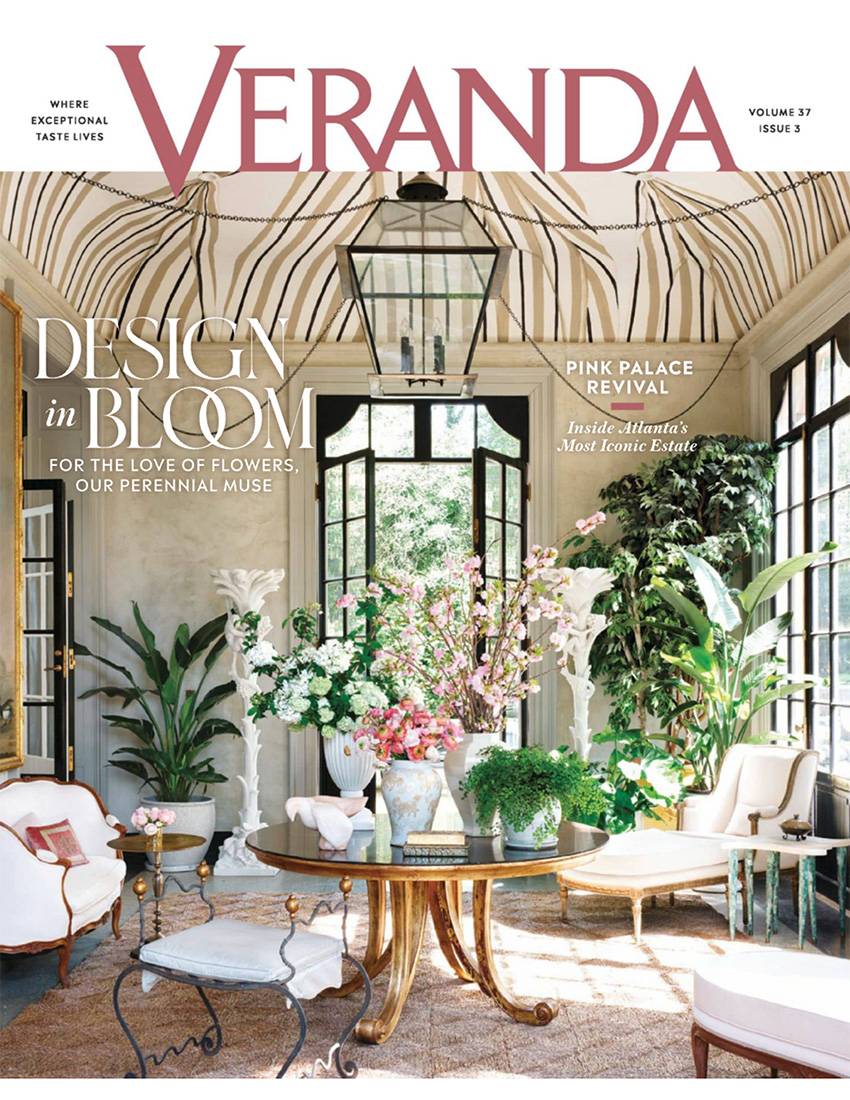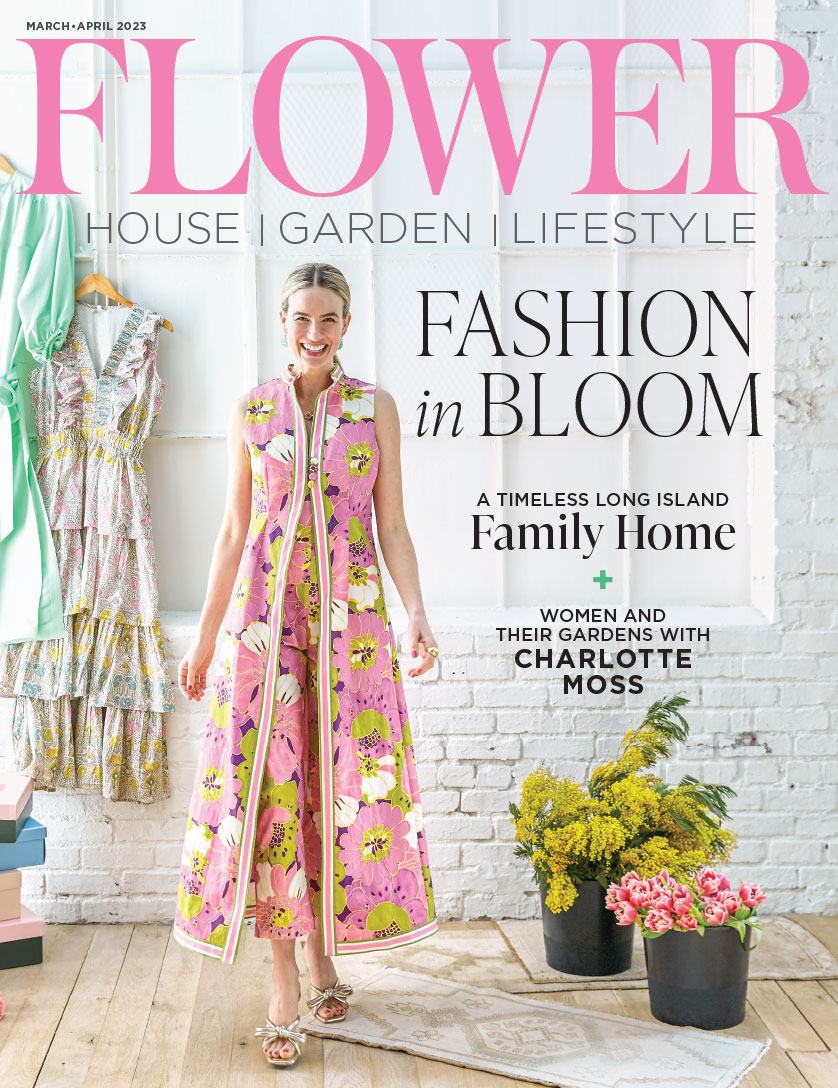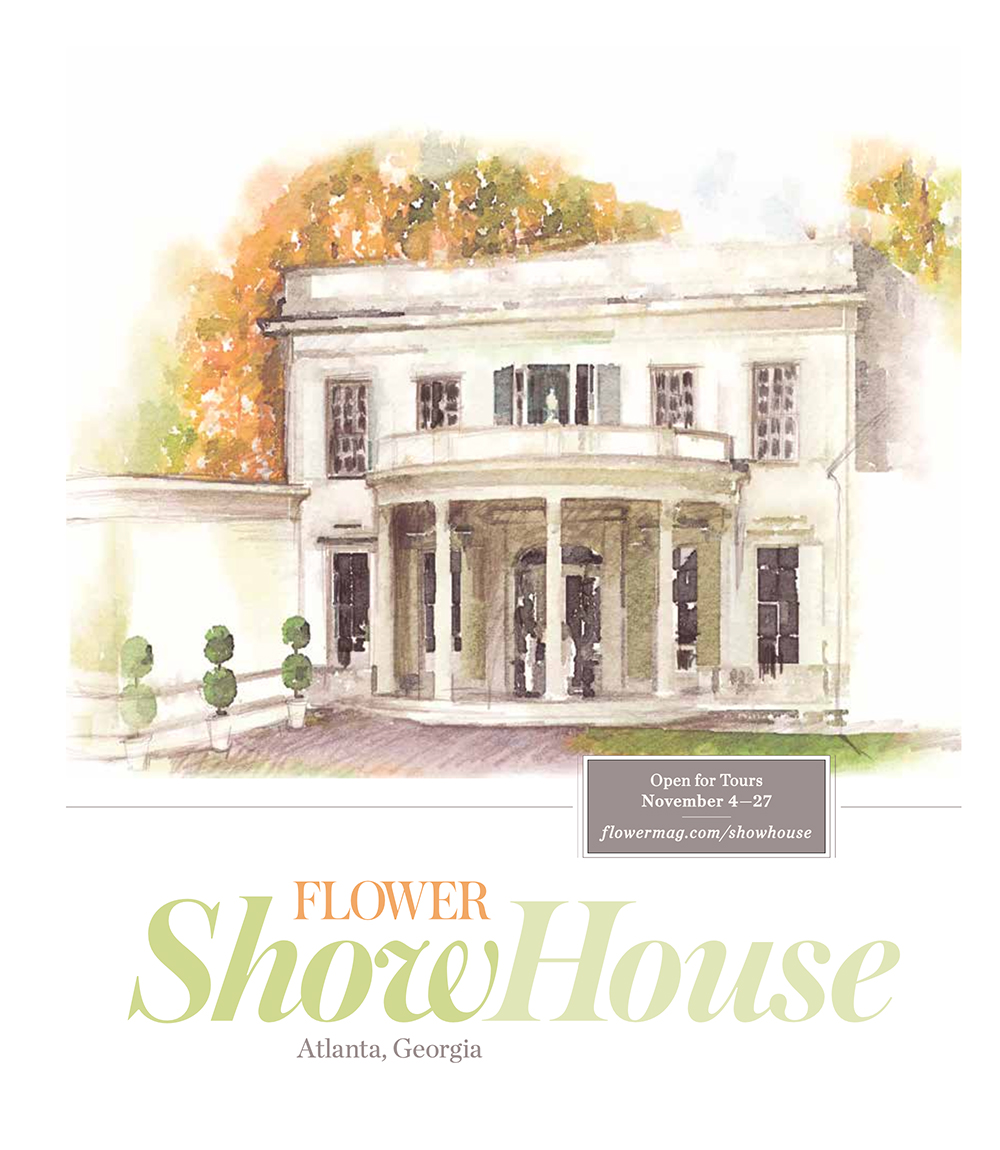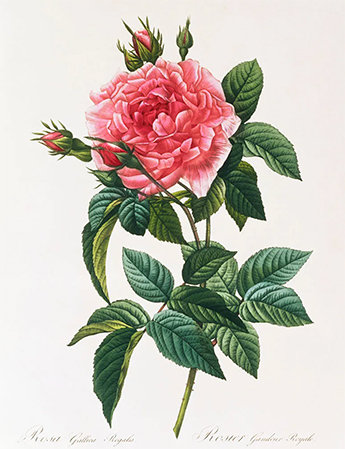“Too much should not be explained about a garden. Its greatest reality is not reality, for a garden, hovering always in a state of becoming, sums its own past and its future…”
– Bunny Mellon, Green Flowers & Herb Trees
Vogue, December 1965
I think green, like a steady boyfriend, is often taken for granted in a garden. It’s the most widespread color—and expressed in a range of hues—in an outdoor environment. The luminescence of leaves that have a way of attracting a single ray of light even on a gray day and their nuanced textures that beg for you to touch them. A cluster of leaves makes a fine arrangement, and green flowers are in a class of their own.
“Some may see green leaves and stems as the supporting cast of actors, playing second fiddle to the marquee-grabbing leading ladies of summer stock. The blowsy peonies, perfumed floribundas, slender delphiniums, and robust dahlias—we love them all, but the loyal green of foliage comes first in my garden book.
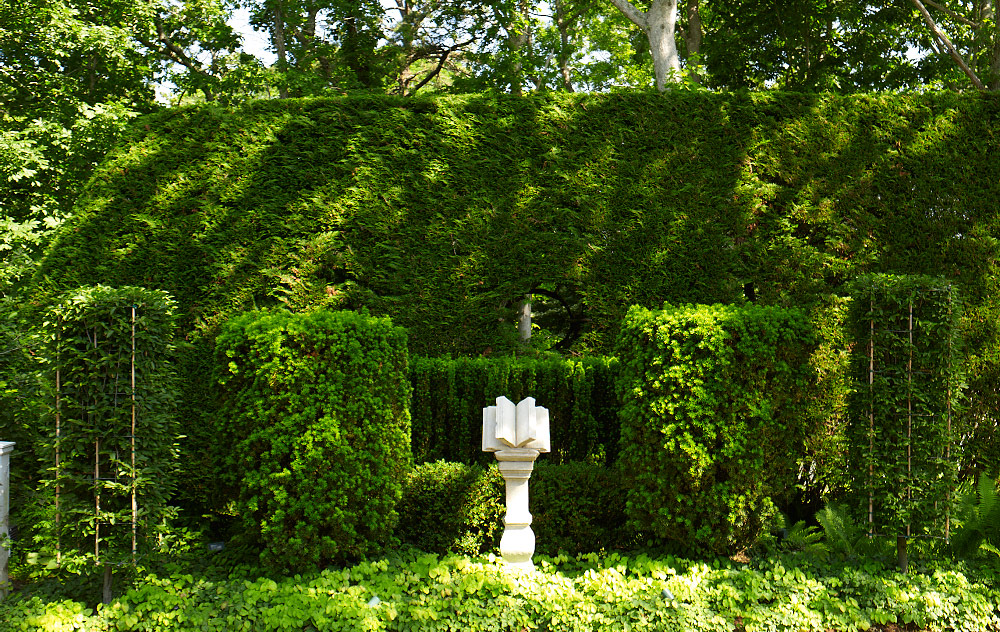
There is no aspect of my garden that teases me more with its endless possibilities than the abundant shades and shapes of green. The outline, the main frame, the chassis, and the backbone, green is the foundation of my garden. Included are walls of hornbeam that define areas and create rooms, arborvitae towers that frame and protect one rose garden, and a pear allée that acts as a tunnel between the house and the path to the pool. Columns of yew flank a garden ornament, and in other parts of the garden more yew columns stand by a moss-covered table surrounded by and topped by plants and an eighteenth-century dolphin sculpture. Belgian fence–espaliered apple trees create a trellis wall around the rose garden, while a new living willow folly shows great promise, its branches being snipped and woven to create something far less formal and perhaps a little mad.
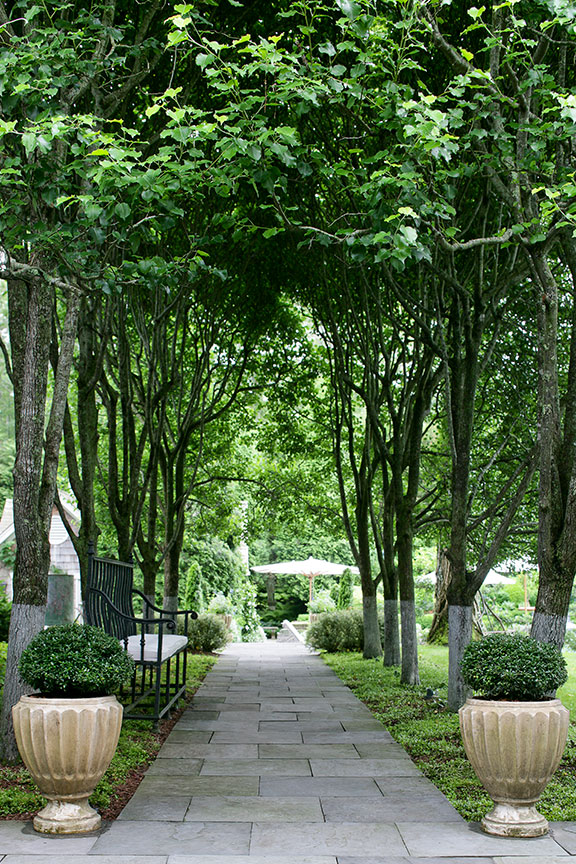

All of these areas and structures have a personality that enables them to stand alone. In other sections of the garden, single trees have paired off in successful pas de deux. A rose climber with a petite blossom wraps itself around a fruit tree, an English ivy disguises the gray bark of an oak tree, or a climbing hydrangea takes over another oak as one has in my garden after persevering for twenty-five years.
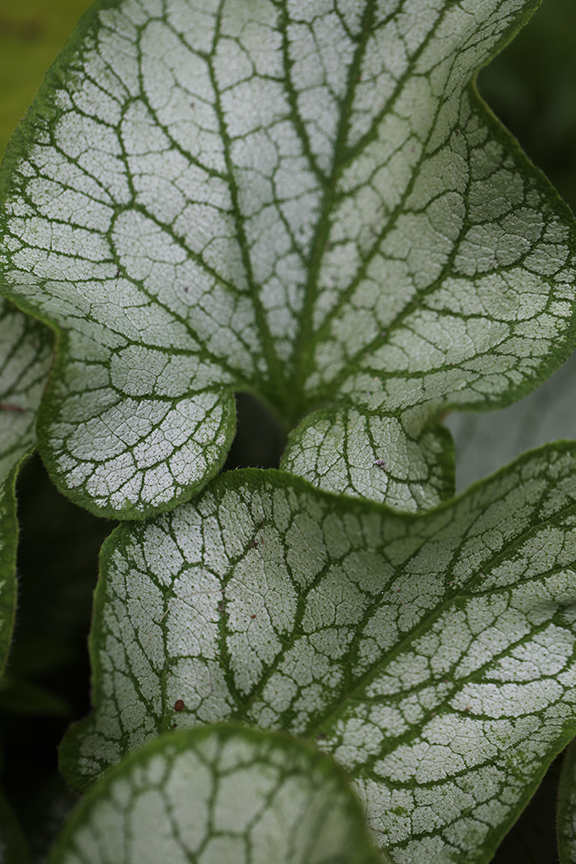
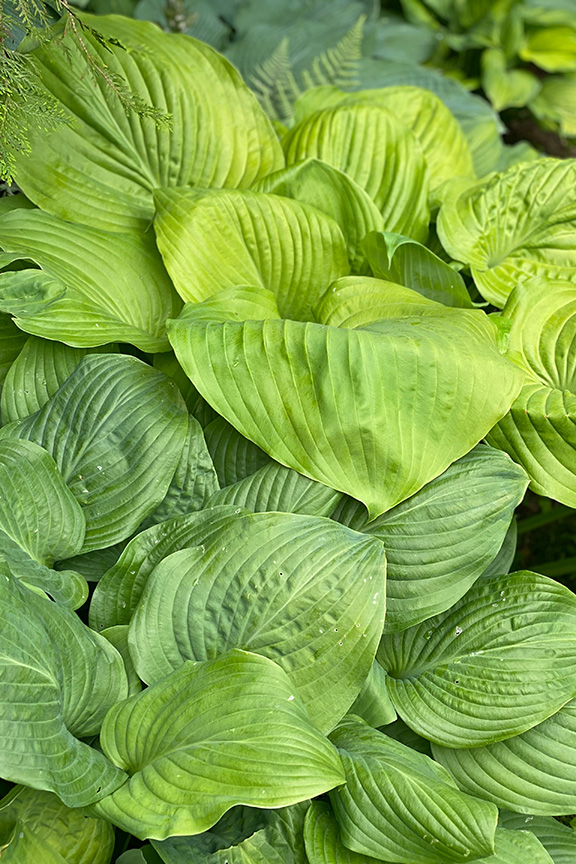
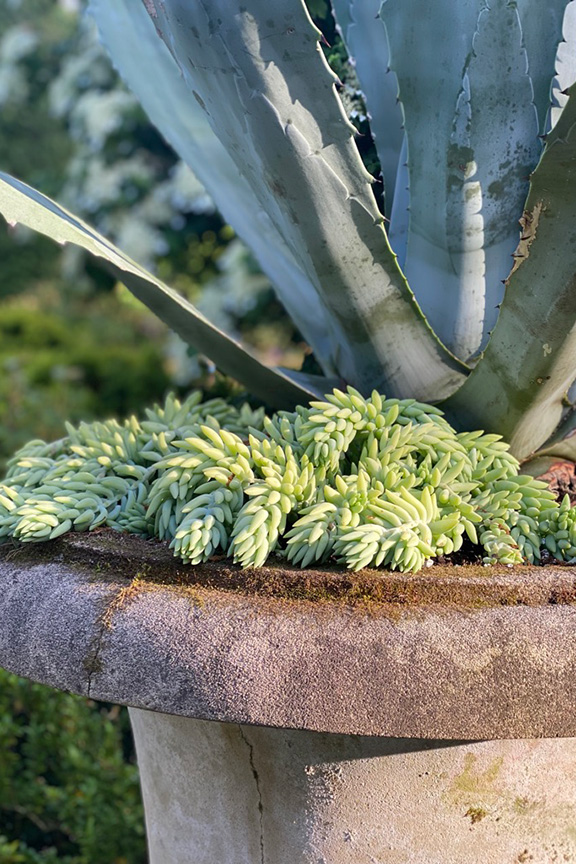
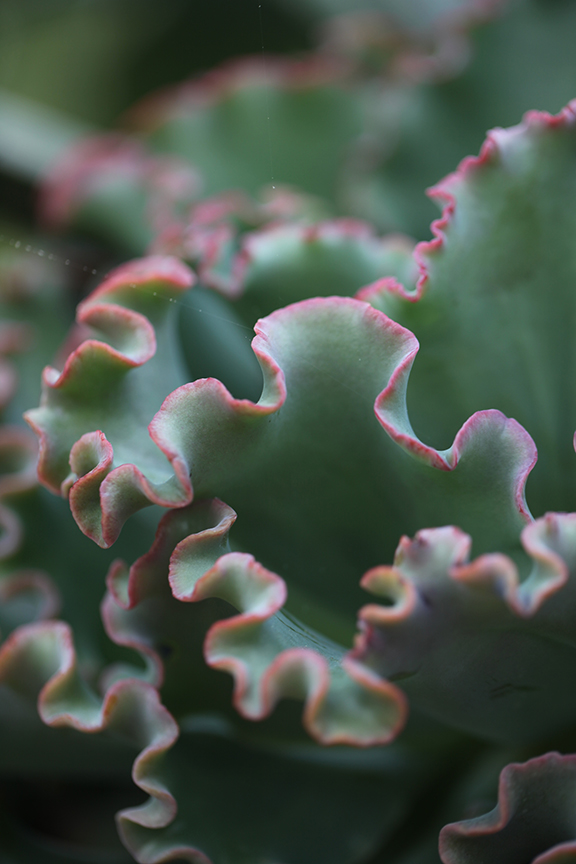
In surveying the garden in the early morning, one catches the silvery-green leaves of heucheras and some begonias dampened with dew, giving the appearance of newly polished sterling silver. The variegated leaves of ajugas, pachysandras, and vincas add light to their beds, while the furry leaves of lamb’s ears, tibouchinas, and Plectranthus beg to be stroked. I pass by the menacing, thorny berberis, with its small soft red leaf, then I move on to hardier ninebark and copper beech of the same deep hue. All year long I admire the trunks of my crape myrtle, waiting for the frothy white blossoms to appear and awaken their green canopies in August. Similarly, we wait patiently as the uneventful green shrub of the limelight hydrangea gives birth to a beautiful hedge of white pyramidal blossoms.
I remember something Francis Ford Coppola said in a Wall Street Journal interview years ago, because I put it in my journal. He said, “On weekends I love to stay at home in Napa […] and admire the trees.” Year after year, we wait and we watch the evolution and beauty of green.”
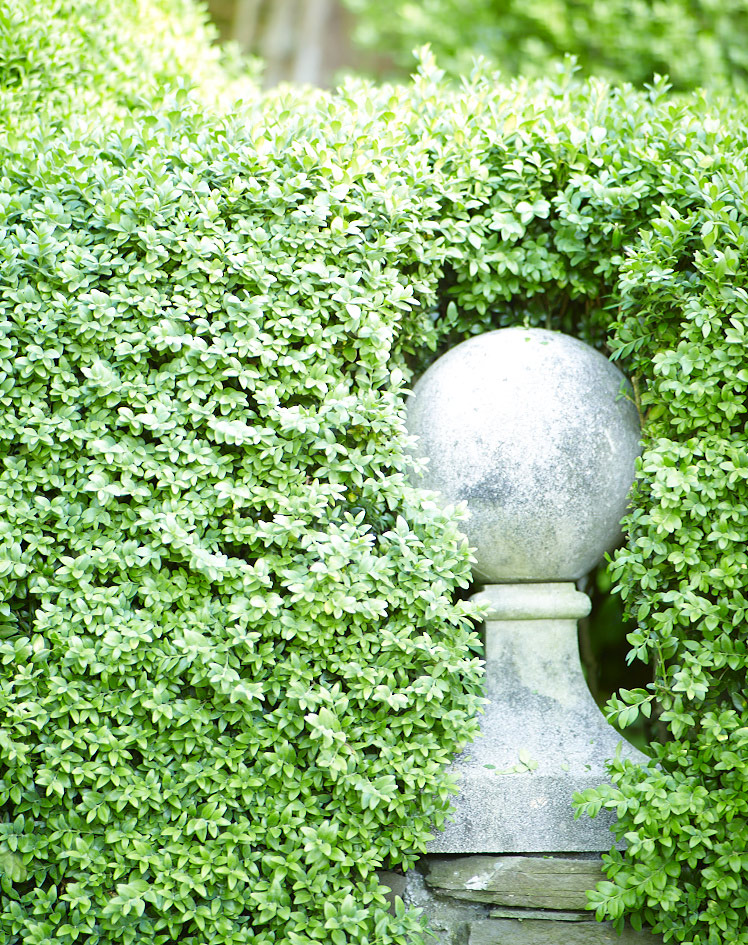
Text from CJ Dellatore’s, Garden Design Master Class, Rizzoli

